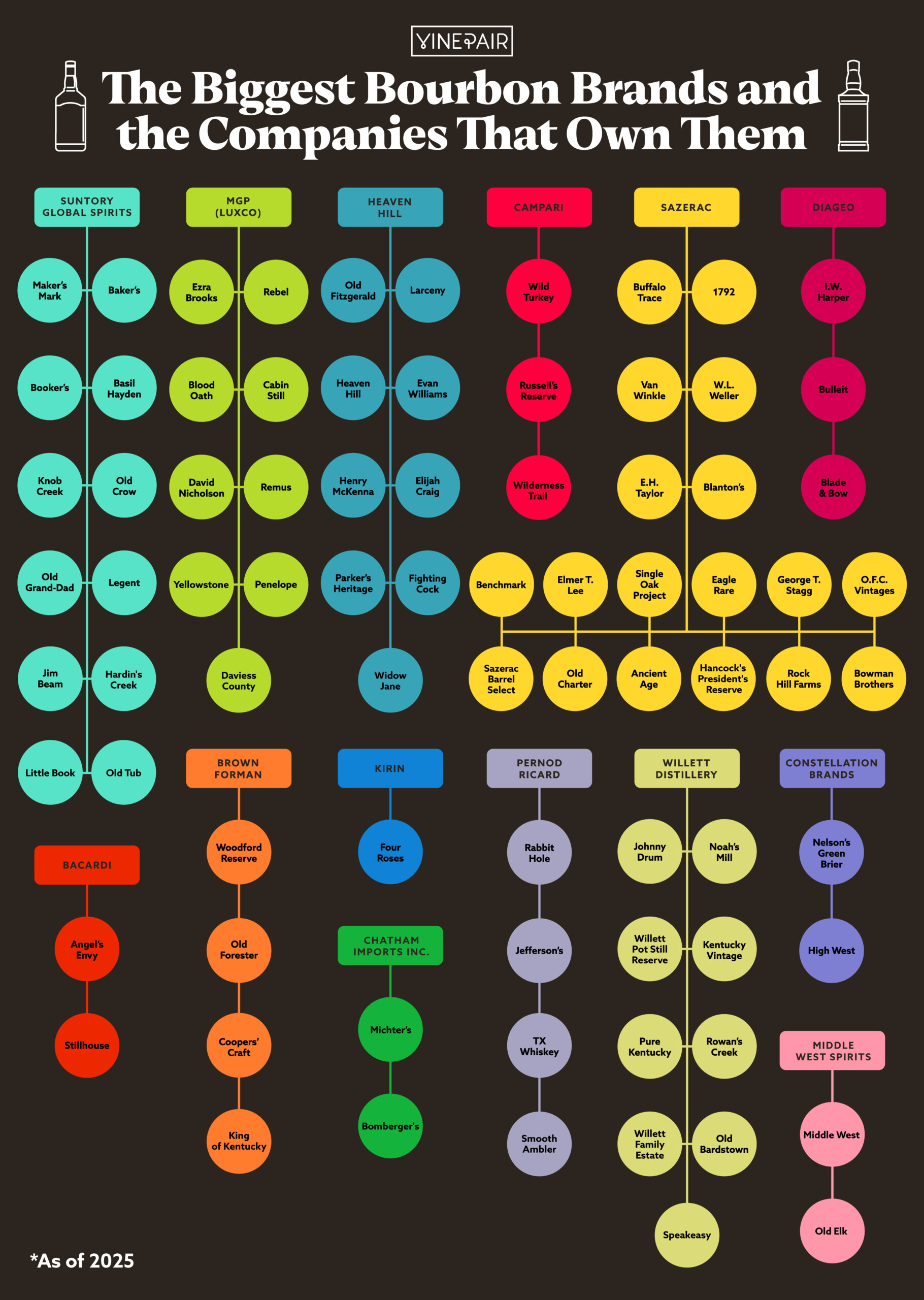Bourbon can be made anywhere in the U.S., but Kentucky is undeniably where the spirit feels most at home. A vast majority — 95 percent — of bourbon production reportedly happens in Kentucky and in 2023, distillers in the Bluegrass State filled a record-breaking 3.2 million new barrels. But just because a bourbon is produced in Kentucky doesn’t mean it’s owned by a company that’s also based in Kentucky.
Given all the bourbon brands on the market today, keeping track of who owns what can get confusing. In most instances, the bigger, more recognizable names — think Jim Beam, Maker’s Mark, and Bulleit — are owned by large parent companies often headquartered out of state. And in the case of Four Roses, parent company Kirin isn’t even based in the U.S., operating instead out of Tokyo, Japan.
Making things even more confusing is the fact that many of the most recognizable bourbon brands are actually owned by the same companies. For example, Booker’s, Knob Creek, and Basil Hayden’s are all produced at the James B. Beam Distillery in Clermont, Ky., which is owned by Suntory Global Spirits (fka Beam Suntory). Buffalo Trace — which is owned by the Sazerac Company — also produces brands like Blanton’s and Pappy Van Winkle at its distillery in Frankfort, Ky.
To make the vast bourbon market a bit easier to understand, we produced this infographic identifying the biggest names in bourbon and the companies that own them. In order to narrow things down, we did not include any independently-owned brands, which is why you’ll notice bourbons like Frey Ranch, New Riff, and Laws are missing.
Curious to see which company owns your favorite bourbon brand? Check out our infographic of the biggest bourbon brands and the companies that own them below!

![The Biggest Bourbon Brands and Companies That Own Them [Infographic] The Biggest Bourbon Brands and Companies That Own Them [Infographic]](https://vinepair.com/wp-content/uploads/2025/11/bourbon-brands-card-375x450.jpg)